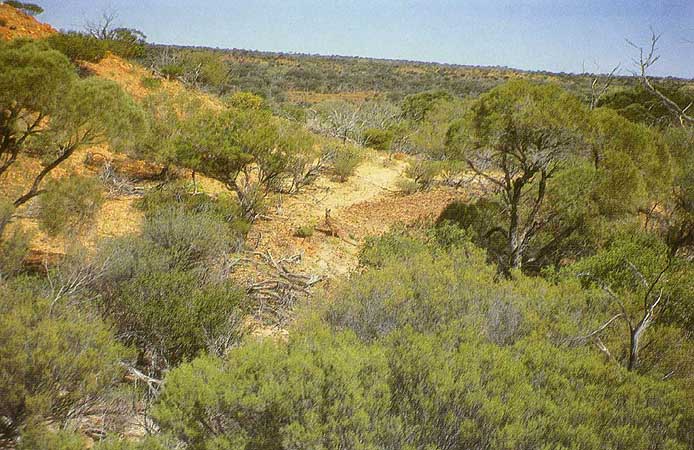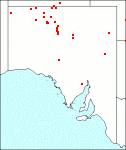Family: Fabaceae
Acacia stowardii

Citation:
J. H. Maiden, J. Proc. R. Soc. N.S.W. 51:269-271(1917).
Derivation: Named in honour of Dr F. Stoward one time Government Botanist in Western Australia.
Synonymy: Racosperma stowardii (Maiden)Pedley, Austrobaileya 2:356 (1987).
Common name: None
Description:
Erect shrub 2-3m tall to small tree. Branchlets terete, glabrous, slightly viscid to minutely scurfy. Bark fissured, dark grey.
Phyllodes curvedly erect, narrow oblanceolate to narrow oblong, 2.5-6.5 cm long, 2-4 mm wide, firm, apices straight or slightly curved to blunt point, glabrous, finely striate with inconspicuous parallel veins, marginal vein resinous towards apex. Gland at base of phyllode on upper margin just above the pulvinus, not prominent. Peduncles 1-2, axillary, 3-6 mm long. Flower-heads shortly cylindrical, 7- 15 mm long, 4-5 mm diameter, 30-70-flowered, flowers 5-partite.
Legumes oblong to 5 cm long, 7 mm wide, flattish, glabrous. Seeds oblique, 4 mm long, funicle folded several times forming a basal aril.
|
|
Distribution:
|
Collections have come from the North West, Lake Eyre, Gairdner-Torrens, Flinders Ranges and Eyre Peninsula regions where it appears to favour rocky uplands and breakaways.
|
Flowering time: May to December with a peak in. late spring. Fruiting collections have been made between September and November.
|

SA Distribution Map based
on current data relating to
specimens held in the
State Herbarium of South Australia
|
Biology:
No text
Related taxa:
Closely related to A. kempeana (sp. 101). Intermediates occur and are by no means easily separated. The phyllodes of A. stowardii are almost always, narrower, more distinctly curved, often a lighter colour when dried. The seeds are usually oblique (more regularly transverse in A. kernpeana). A. stowardii and A. kernpeana can occur in close proximity to each other.
Author:
Not yet available
Source:

|

